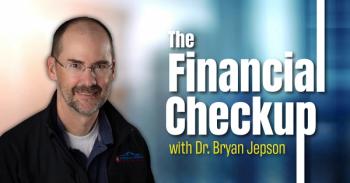
The war on private equity in health care – a 25 year lens
Blaming private equity for the woes of American health care is all the rage in our current era.
Blaming
But why is
Health care is a rapidly changing industry, with advancements in technology dramatically improving health care outcomes. The result is that health care companies have needed lots of new investment dollars to keep up, and there are basically four ways to raise that investment money. The first is public market equity, like money raised on the New York Stock Exchange or Nasdaq. The second is private equity, which covers everything from personal money and venture capital to private equity funds consisting of money raised from accredited investors. The third is nonprofit equity, which consists of money raised from charitable giving – for much of the last two centuries, this has been the major way to fund hospitals. The fourth is government equity, which consists of taxpayer dollars – i.e., the county-owned hospital and its public board, funded from local property taxes.
So, what was the fundamental shift in finance? Until 2002, one of the most accessible sources of equity was public market money – listing on the NYSE or Nasdaq, and raising lots of dollars from the American public. Most major health insurers and pharmaceutical companies are public, and hospitals and health care companies followed suit.
But in the early 2000s, two darlings of Wall Street, Enron and Worldcom, went under following the discovery of massive securities frauds.The result was swift action by Congress to pass a new law, known as Sarbanes-Oxley (or SOX), that made it significantly more difficult for companies to go public. It also made it more expensive for existing companies to stay public, and more dangerous for executives to run public companies. Sarbanes went into effect on July 1, 2002, and it significantly curtailed the public securities markets.
While Congress’ goal was to protect the public from fraudulent investments, almost 25 years on, it’s clear that what SOX did was protect the public from almost all investments. From 1982 to 2002, the U.S. created approximately 7,000 new public companies. Since 2002, however, the U.S. has created only about 3,000. The number of public companies has also declined since that time, as many have merged or chosen to go private since 2002. The Wilshire 5000 index, a widely used measure of the universe of U.S. public companies, now tracks only about 4,300 companies – because those are all the U.S. public companies that exist.
With the public markets accepting few new applicants, health care companies (and U.S. companies across all industries) have had to go elsewhere for investment money. So, for almost 25 years, the only significant source of funding has been private equity. By taking away the competition from public markets for investment dollars, Congress created an environment where private equity has flourished. And in the absence of a public alternative, many companies have grown accustomed to the private environment; privately owned companies do not have the same disclosure obligations as public companies, and there is much less personal risk for executives.
When it comes to health care, if there are four types of equity to grow companies, what happens when the first (public markets) is essentially closed and the second (private equity) is under attack? It means that if private equity is driven out of health care, there will be only two ways left to grow health care companies – charitable contributions and taxpayer dollars. In a country like the U.S. – where we believe in the power of the market, and we have a dynamic economy that leads the world – that seems hardly a prescription for success.
The alternative, and the opportunity to continue improving U.S. health care, is straightforward. Instead of reducing the number of sources of investment capital in health care by chasing private equity from the space, the U.S. should make it easier for companies to go public again – not necessarily as easy as it was before SOX but much easier than it is now.
Health care is in the midst of a continuing revolution and more sources of investment capital are the answer, not less. More investment opportunities will bring competition for the best dollars, and the best dollar will win – sometimes public markets, sometimes private equity, and sometimes charitable or taxpayer dollars. This is the prescription for how we fund innovation and improve health care in the U.S. over the next several decades.
Bobby Guy is a health care deal lawyer with national law firm
Newsletter
Stay informed and empowered with Medical Economics enewsletter, delivering expert insights, financial strategies, practice management tips and technology trends — tailored for today’s physicians.














